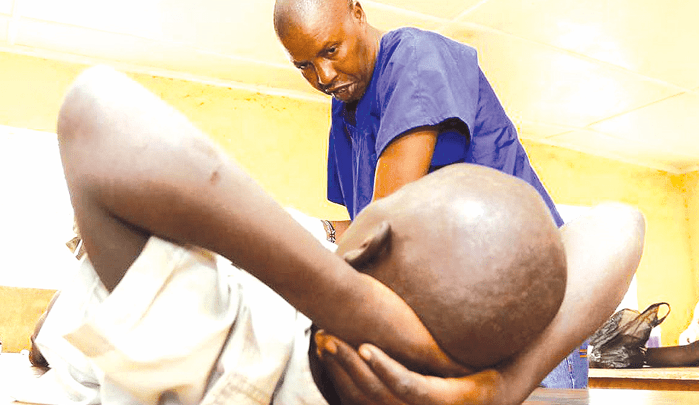Low voluntary circumcision uptake remains a worry

Voluntary Medical Male Circumcision (VMMC) uptake remains lowest among Kenyan men aged 25–39 years, a new report has revealed.
According to the report dubbed Shifting reasons for older men remaining uncircumcised: Findings from a pre- and post-demand creation intervention among men aged 25–39 years in Western Kenya despite successes in rolling out the VMMC programme in Western Kenya, the uptake remains lowest among older men.
The lower uptake of VMMC has been attributed to various barriers. One significant factor is that the procedure requires healthy men to undergo a surgical process that involves considerable discomfort and inconvenience. Additionally, VMMC provides only partial protection against an uncertain individual risk of acquiring HIV, further discouraging older men from opting for the procedure.
“Though several approaches have been implemented to increase demand for VMMC in Eastern and Southern Africa, including providing conditional economic compensation, fixed compensation, and lottery-based rewards, age prioritization and outreach services, information and motivation through pregnant female partners, and peer referral incentives, these interventions have at best resulted in a modest increase in the uptake of circumcision by men above 20 years of age,” reads part of the report.
Potential complications
Other barriers are individual barriers and include fear of pain and potential complications, discomfort from sharing waiting areas with younger clients, HIV testing, the perception that circumcision reduces penis sensitivity and sexual pleasure, difficulty adhering to sexual abstinence for six weeks post-operation, loss of income during the healing period, and the concern that male circumcision is against cultural and ethnic identity.
The study was conducted in Migori, Kisumu, Siaya, and Homabay. Most participants were from Kisumu County (45.6 percent), and the majority reported being married (86.3 percent), with only 11.0 percent reporting being single. A larger proportion of the participants (39.3 percent) were under 30 years of age compared to those aged 30-34 (34 percent) and 35-39 (27 percent).
Low adoptions
According to Kawango Agot, the lead author of this study, some assumptions have contributed to the low adoption rates by married men. One assumption is that uncircumcised older men who are married may be reluctant to get circumcised because it could suggest to others, especially their female sexual partners that they intend to engage in extramarital sex and need circumcision for protection. Another assumption is that married men may no longer feel at risk of HIV acquisition.
Additionally, it could be possible that the men saw no reason to get circumcised since their religion advocates for faithfulness.
Religion has been reported as a barrier to seeking VMMC in some studies of the acceptability of VMMC.In a survey conducted in the Nyanza region, Kenya, the fourth-ranked reason reported by men who did not choose VMMC was religion.
“However, given that nearly all participants in our study were Christians, we may not know if religion might have influenced their disinterest in VMMC. We recommend further in-depth research into the association between Christianity and VMMC,” said Agot.
VMMC is an HIV prevention intervention for men where the foreskin is surgically removed. According to the World Health Organization, male circumcision reduces the risk of HIV transmission by 60 percent. Additionally, it has other health benefits like reduced risk of contracting sexually transmitted infections, reduced risk of recurrent urinary tract infections, and prevention of penile cancer in men and cervical cancer in females.
HIV prevalence
The Kenyan Ministry of Health initiated the VMMC program in 2008. This is after the World Health Organization (WHO) and the Joint United Nations Programme on HIV/AIDS (UNAIDS) recommended countries with a high HIV prevalence and low rates of male circumcision to consider scaling up VMMC as part of a comprehensive HIV prevention package in 2007.
However, despite successes in rolling out the VMMC program, the uptake in Kenya remains lowest among older men. The Kenya Population-based HIV Impact Assessment Survey report showed that VMMC prevalence among males aged 20 years and older in the priority counties was 46.9 percent, compared to 63.2 percent among males aged 15-19.
Additionally, the US President’s Emergency Plan for AIDS Relief (PEPFAR) report indicated that only five percent of the circumcisions performed from 2015 to 2021 were among men aged 25 years and older, highlighting the ongoing challenge of reaching older men with VMMC services.
“VMMC uptake in 2020 and 2021 in Kenya was very minimal compared to the previous years and this may partly be attributed to the reduction in VMMC funding globally following the transition from rapid to sustainability phase in addition to the individualized barriers to VMMC which have remained the same,” added Agot.



